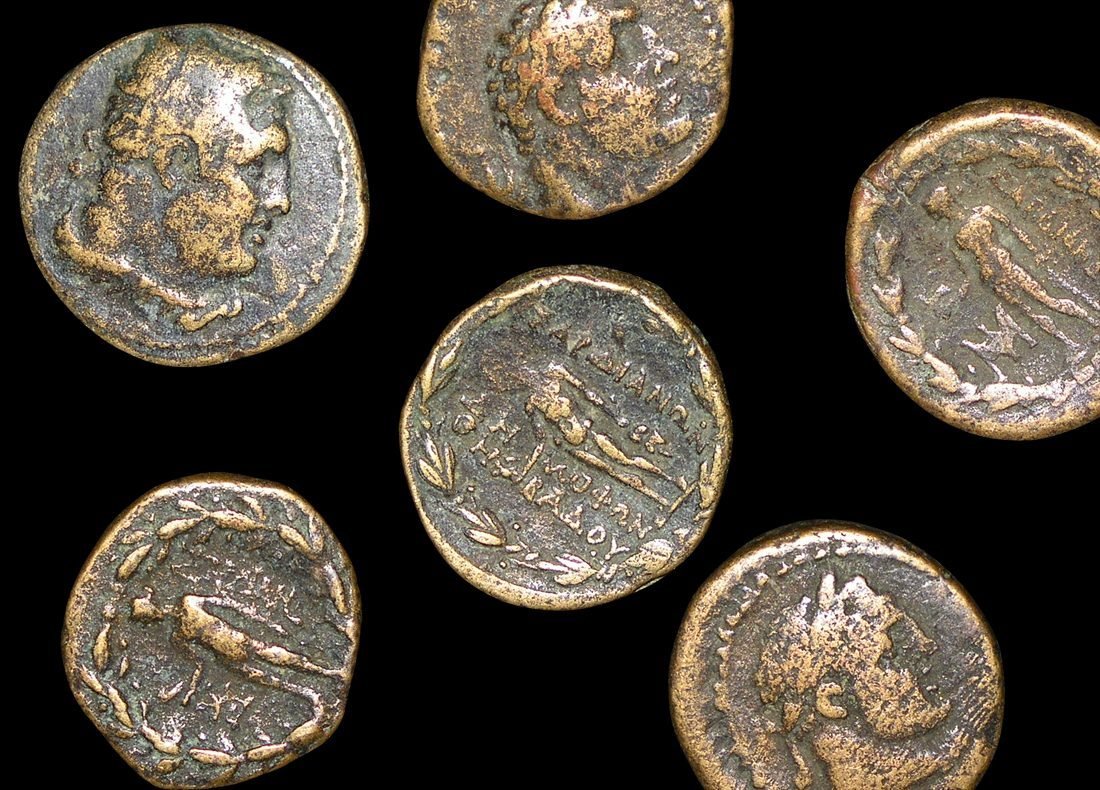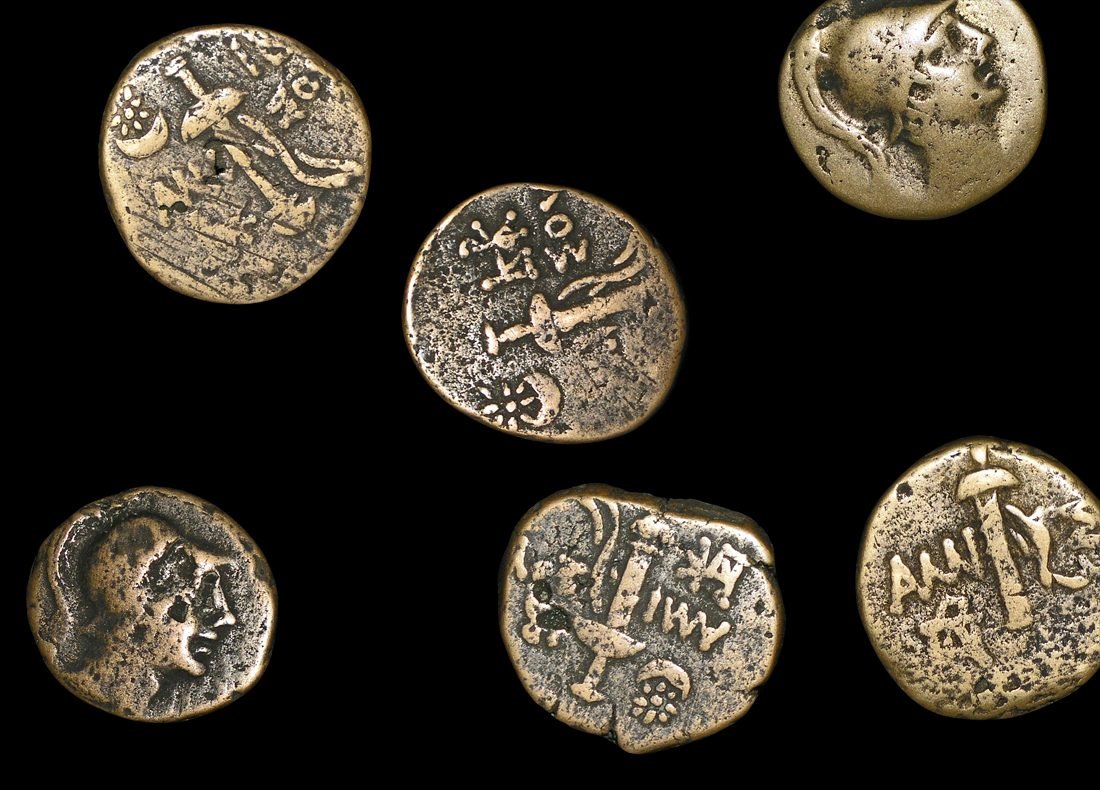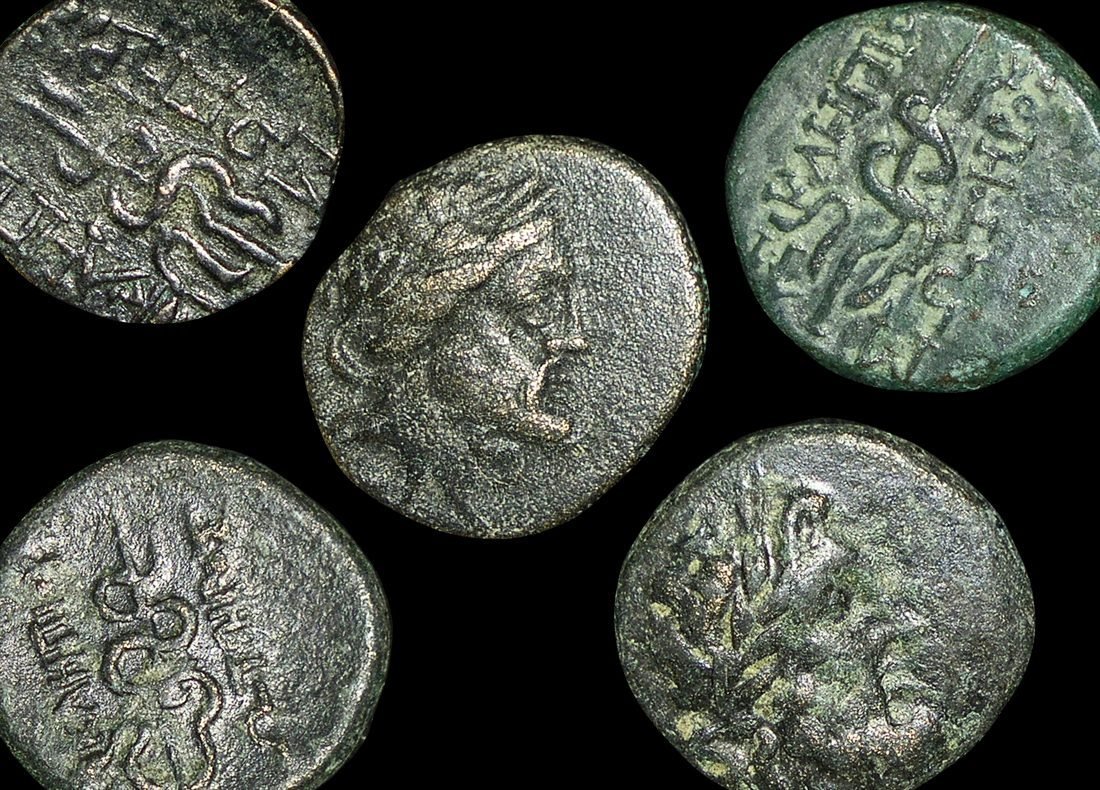 Image 1 of
Image 1 of


Bronze Coin from Sardis in Lydia (about 2100-2200 years ago)
This bronze unit was minted in Sardis, the ancient capital of Lydia in western Asia Minor, during the 2nd-1st century BCE. As a coin from the legendary birthplace of coinage itself, this modest bronze piece represents the continuation of a monetary tradition that revolutionized human commerce centuries earlier.
Coin Description:
Front side: Likely features the head of a deity (possibly Apollo, Zeus, or Heracles) or a city personification rendered in Hellenistic style
Back side: Could display civic symbols of Sardis, mythological creatures, or objects associated with Lydian identity and history
Technical Details:
Bronze alloy composition
Small bronze denomination (specific nomenclature varies by reference work)
Reference numbers not visible in description
Condition not specified (likely Fine, showing expected wear)
Minted approximately 200-50 BCE
No certification mentioned in description
Historical Significance:
This coin comes from the city credited with one of humanity's most significant economic innovations: the invention of standardized coinage. While this particular bronze piece dates from the Hellenistic period when Sardis was under Greek influence, the city's numismatic legacy began centuries earlier in the 6th century BCE. Under King Croesus (whose name became synonymous with vast wealth), Lydian metallurgists perfected the technique of separating gold from silver, allowing the production of the world's first standardized pure gold and silver coins of guaranteed value. This technological breakthrough transformed commerce by creating a trusted medium of exchange that could be used throughout the ancient world. By the time this bronze coin was minted, Sardis had fallen under successive Persian, Greek, and Roman control, but maintained its status as an important commercial center. The coin reflects the enduring economic importance of a city that gave birth to the concept of standardized coinage that still forms the basis of modern monetary systems.
This bronze unit was minted in Sardis, the ancient capital of Lydia in western Asia Minor, during the 2nd-1st century BCE. As a coin from the legendary birthplace of coinage itself, this modest bronze piece represents the continuation of a monetary tradition that revolutionized human commerce centuries earlier.
Coin Description:
Front side: Likely features the head of a deity (possibly Apollo, Zeus, or Heracles) or a city personification rendered in Hellenistic style
Back side: Could display civic symbols of Sardis, mythological creatures, or objects associated with Lydian identity and history
Technical Details:
Bronze alloy composition
Small bronze denomination (specific nomenclature varies by reference work)
Reference numbers not visible in description
Condition not specified (likely Fine, showing expected wear)
Minted approximately 200-50 BCE
No certification mentioned in description
Historical Significance:
This coin comes from the city credited with one of humanity's most significant economic innovations: the invention of standardized coinage. While this particular bronze piece dates from the Hellenistic period when Sardis was under Greek influence, the city's numismatic legacy began centuries earlier in the 6th century BCE. Under King Croesus (whose name became synonymous with vast wealth), Lydian metallurgists perfected the technique of separating gold from silver, allowing the production of the world's first standardized pure gold and silver coins of guaranteed value. This technological breakthrough transformed commerce by creating a trusted medium of exchange that could be used throughout the ancient world. By the time this bronze coin was minted, Sardis had fallen under successive Persian, Greek, and Roman control, but maintained its status as an important commercial center. The coin reflects the enduring economic importance of a city that gave birth to the concept of standardized coinage that still forms the basis of modern monetary systems.
This bronze unit was minted in Sardis, the ancient capital of Lydia in western Asia Minor, during the 2nd-1st century BCE. As a coin from the legendary birthplace of coinage itself, this modest bronze piece represents the continuation of a monetary tradition that revolutionized human commerce centuries earlier.
Coin Description:
Front side: Likely features the head of a deity (possibly Apollo, Zeus, or Heracles) or a city personification rendered in Hellenistic style
Back side: Could display civic symbols of Sardis, mythological creatures, or objects associated with Lydian identity and history
Technical Details:
Bronze alloy composition
Small bronze denomination (specific nomenclature varies by reference work)
Reference numbers not visible in description
Condition not specified (likely Fine, showing expected wear)
Minted approximately 200-50 BCE
No certification mentioned in description
Historical Significance:
This coin comes from the city credited with one of humanity's most significant economic innovations: the invention of standardized coinage. While this particular bronze piece dates from the Hellenistic period when Sardis was under Greek influence, the city's numismatic legacy began centuries earlier in the 6th century BCE. Under King Croesus (whose name became synonymous with vast wealth), Lydian metallurgists perfected the technique of separating gold from silver, allowing the production of the world's first standardized pure gold and silver coins of guaranteed value. This technological breakthrough transformed commerce by creating a trusted medium of exchange that could be used throughout the ancient world. By the time this bronze coin was minted, Sardis had fallen under successive Persian, Greek, and Roman control, but maintained its status as an important commercial center. The coin reflects the enduring economic importance of a city that gave birth to the concept of standardized coinage that still forms the basis of modern monetary systems.
You Might Also Like






